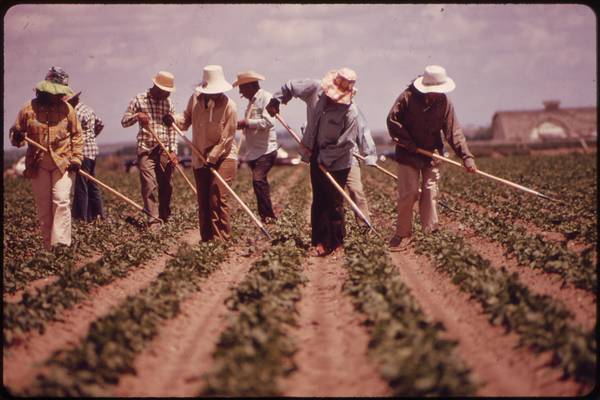Weeding Agriculture Equipment
Drafted by: vijaychourey26@gmail.com
In modern agriculture, weeds pose a significant challenge to farmers as they compete with crops for essential resources, affecting their growth and reducing overall yield. Manual weeding can be labor-intensive and time-consuming, making it essential for farmers to invest in advanced weeding agriculture equipment. This article explores the various types of weeding equipment available, their benefits, and how they contribute to enhancing farm efficiency and crop yield.
The Importance Of Effective Weeding
Weeds are unwelcome intruders in any agricultural setting. They compete with crops for sunlight, water, and nutrients, stunting their growth and reducing overall yield. In the past, farmers predominantly relied on manual labor for weeding, which was not only physically demanding but also economically inefficient. With the advancement of technology, various types of weeding agriculture equipment have been developed to address these challenges.
Types Of Weeding Agriculture Equipment
Hoes and Handheld Tools
Hoes and handheld tools have been used for centuries to remove weeds manually. While they are still used in small-scale farming and gardening, they are not suitable for large-scale operations due to the labor-intensive nature.
Mechanical Weeders
Mechanical weeders, also known as tractor-mounted weeders, have gained popularity among farmers for their efficiency. These machines use rotating blades, tines, or brushes to uproot or cut weeds, making them ideal for larger farms.
Thermal Weeders
Thermal weeders use heat to kill weeds without the use of chemicals. They are particularly useful for eliminating weeds in the early growth stages, preventing them from spreading further.
Chemical Weed Control
Chemical weed control involves the use of herbicides to kill or inhibit weed growth. While effective, it requires careful application to avoid harming the crops and surrounding environment.
Advantages Of Using Weeding Equipment
Time Efficiency
Weeding agriculture equipment significantly reduces the time required for weed control, allowing farmers to focus on other essential tasks.
Cost Savings
Although the initial investment may seem substantial, weeding equipment proves cost-effective in the long run, as it minimizes the need for manual labor and chemical herbicides.
Improved Crop Health
By removing weeds, the crops have better access to essential resources, leading to healthier and more robust plant growth.
Reduced Herbicide Dependency
Using mechanical or thermal weeders reduces reliance on herbicides, promoting more sustainable and eco-friendly farming practices.
Environmentally Friendly Practices
Certain weeding equipment, such as thermal weeders and precision tools, eliminate the need for chemical herbicides, thereby reducing their environmental impact.
Factors To Consider When Choosing Weeding Equipment
Farm Size and Type of Crops
The size of the farm and the type of crops grown will determine the most suitable weeding equipment, as different machines are designed for various scales and crops.
Soil Type and Condition
Soil characteristics and conditions affect equipment performance. For example, rocky or heavy clay soils may require specialized weeding tools.
Budget Constraints
Farmers need to evaluate their budget and determine the most cost-effective weeding equipment that meets their requirements.
Environmental Impact
Choosing equipment that aligns with environmentally friendly practices can help protect the ecosystem and surrounding wildlife.
Best Practices For Using Weeding Equipment
Proper Calibration and Adjustment
Correctly calibrating and adjusting the weeding equipment ensures precise and effective weed control.
Regular Maintenance and Cleaning
Routine maintenance and cleaning prevent equipment malfunction and extend its lifespan.
Integrating Weeding with Other Farming Practices
Integrating weeding with other farming practices, such as crop rotation, cover cropping, and mulching, can enhance overall weed management.
Safety Measures and Training
Proper safety measures and training should be provided to farm workers to avoid accidents and injuries during equipment operation.
Case Studies: Successful Implementations
Small-Scale Farms
On small-scale farms, manual weeding or handheld tools are often the most practical options. Some farmers have found success in using thermal weeders for targeted weed control.
Large Commercial Farms
Large commercial farms benefit from tractor-mounted mechanical weeders, which can cover vast areas efficiently.
Organic Farming Operations
Organic farming operations prioritize sustainability and rely on manual labor, thermal weeders, and other chemical-free methods for weed control.
The Future Of Weeding Agriculture Equipment
Advancements in Technology
Continuous technological advancements are leading to more sophisticated and efficient weeding equipment.
AI and Robotics in Weed Control
The integration of AI and robotics in weeding equipment shows great promise in automating and optimizing weed control processes.
Precision Agriculture and Weeding
Precision agriculture techniques, such as GPS-guided weeding, enable precise and targeted weed control, reducing herbicide use.







